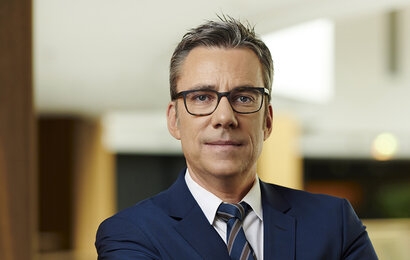
Can you tell me a bit more about MET Group and what it does?
MET Group is an integrated energy company, headquartered in Switzerland. We are active in natural gas and power markets all over Europe, also focusing on energy infrastructure and industrial assets. We consider the growth of renewable power generation as a key part of our business strategy going forward. MET is one of the fastest growing energy companies in Europe, in 2021 our consolidated sales revenue amounted to EUR 18,1 billion.
What is the extent of your renewables portfolio and what technologies does it cover?
MET aims for a 500 MW renewables portfolio consisting of solar and onshore wind installations to be in operation by 2023, and an additional 500 MW by 2026. We are targeting further growth of wind and solar projects across the European Union, seeking to play an active role in the ongoing energy transition.
Weather-dependent green power production poses a challenge to owners, investors and operators due to strict demands for precise scheduling in the power supply. That is why MET Group is interested in the energy storage sector as well. Besides, we have launched our first R&D project examining potential alternative methods of utilising renewable energy sources, and how optimised automated algorithms can balance weather-dependent, intermittent power generation.
Besides Italy and Spain, markets you say you are expanding into, what other markets are you present in?
We already have solar and wind parks operating in Hungary and Bulgaria. As MET Group aims to build a geographically diversified renewables portfolio, we target Bulgaria, Romania, Croatia, Serbia, Hungary, Poland, Italy and Spain, where the investment environment for renewable energy is improving. From a business model perspective, our project portfolio is relying on both state-backed policy support (feed-in-tariff or CfD), and market-based revenues (PPAs and/or structured hedging).
What locations in Italy and Spain are you targeting, and with what clean energy technologies?
Our aim is to develop greenfield projects as well as to acquire ready-to-build and operating assets, regardless of specific locations. MET Group focuses both on early and late-stage solar and onshore wind projects, whilst aiming to diversify geographically and from a technological point of view.
Who are your main partners, in Italy and Spain particularly?
In both countries, we directly work with local projects developers who are experienced in securing land and have a deep understanding of grid connection solutions, specific project constraints, as well as the necessary authorisation processes for photovoltaic and onshore wind projects.
How are you supporting your projects there with support mechanisms, particularly energy storage?
As energy storage technologies become more cost efficient, we are expecting an inflection point in the industry soon. The technology can be used for various purposes, for instance mitigating the risk of the cannibalization process of solar plants or reducing balancing needs.
How do you envisage your activities in Italy and Spain, and elsewhere if particularly active at the moment, positively affecting the affordability of energy for the end user?
MET’s expansion strategy focuses on European markets where we already have a local presence, building on our existing operations across the Group. The challenge is that you have to be an established player in those markets. Our sales subsidiaries offer green power and services to their customers, and the percentage of partners adopting renewable energy products is constantly increasing.
Have the current energy price rises, linked to gas, along with the Ukraine crisis, affected your activity recently and if so, how?
MET Group is a robust, diversified, and risk-averse energy company. Our business model makes us resilient, and we are prepared to handle different scenarios. MET has had a successful year, we were able to preserve our financial stability. Our aim is to have a diversified asset portfolio capable of providing balancing services at competitive prices all the time. This is why we invest in CCGT, gas engines, CHP and energy storage.
How are you safeguarding your solar projects against heat-induced degradation, which is or may become a particular concern in the Mediterranean as climate change increases?
PV module suppliers usually provide at least 10 years of product warranty and a minimum of 25 years of performance warranty for their products. We usually spend significant resources to be aware about the actual condition of our assets and we monitor them, including the degradation of the PV modules.
What other measures are you taking to make energy cleaner, more efficient and more affordable?
In many of our projects, we also include agrovoltaic features to ensure ongoing agricultural activities, or even improve the agricultural yield by providing shading and wind shields to protect the land and the cultivation.
In the current market environment with high energy prices, we can provide competitive green power from our assets directly to our clients locally, or also across borders based on corporate Purchase Power Agreements (cPPA), including the necessary Guarantees of Origin (GO) to confirm the power production from renewable resources, applied technology and asset location.
How do you see things working out for you in, say, ten years’ time?
We will have a multi-GW pan-European portfolio in operation. The portfolio will be well diversified geographically, technology-wise with onshore wind and photovoltaics, and commercially with regard to off-taking. In addition, on-site storage and sector coupling setups (e.g. green hydrogen production) are selectively applied to increase the integration of the produced power with the overall energy demand – improving the efficiency, flexibility and reliability of the whole production portfolio in relation to energy end-use.
For additional information:

